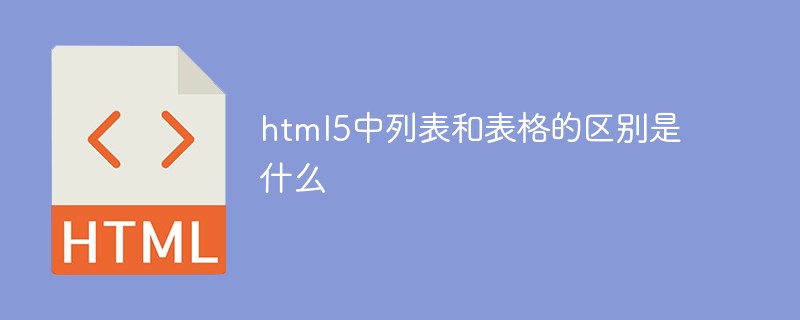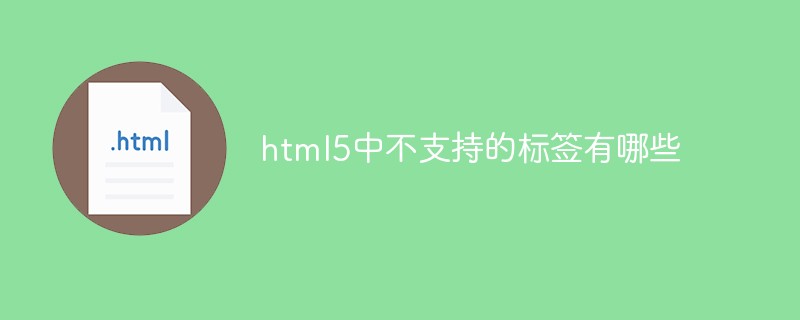 Web Front-end
Web Front-end H5 Tutorial
H5 Tutorial Sort out some new features of HTML5 and common attributes of Canvas_html5 tutorial skills
Sort out some new features of HTML5 and common attributes of Canvas_html5 tutorial skills1.HTML5 content type
| 内容类型 | 描述 |
|---|---|
| 内嵌 | 向文档中添加其他类型的内容,例如audio、video、canvas和iframe等 |
| 流 | 在文档和应用的body中使用的元素,例如form、h1和small |
| 标题 | 段落标题,例如h1、h2和hgroup等 |
| 交互 | 与用户交互的内容,例如音频和视频的控件、botton和textarea等 |
| 元数据 | 通常出现在页面的head中,设置页面其他部分的表现和行为,例如script、style和title等。 |
| 短语 | 文本和文本标记元素,例如mark、kdb、sub和sup等 |
| 片段 | 用友定义页面片段的元素,例如article、aside和title等 |
2. New fragment elements in HTML5
| 元素名 | 描述 |
|---|---|
| header | 标记头部区域的内容(用于整个页面或页面中的一块区域) |
| footer | 标记脚部区域的内容(用于整个页面或页面中的一块区域) |
| section | Web页面中的一块区域 |
| article | 独立的文章内容 |
| aside | 相关内容或者引文 |
| nav | 导航类辅助内容 |
3. New querySelector method

Tip
The selectors API is not only convenient, when traversing the DOM, the selectors API is usually faster than the previous child node search API. To enable fast style sheets, browsers are highly optimized for selector matching.
4.Canvas API
4.1Canvas Overview
Canvas is essentially a bitmap canvas. The graphics drawn on it are not scalable and cannot be enlarged or reduced like SVG images. . In addition, objects drawn with Canvas do not belong to the page DOM structure or any namespace.
To use canvas programming, you must first obtain its context. Then perform actions in the context, and finally apply those actions to the context.
The coordinates in the canvas start from the upper left corner, the x-axis extends to the right along the horizontal direction (in pixels), and the y-axis extends downward along the vertical direction. The point with coordinates x=0, y-0 in the upper left corner is called the origin.
Like most HTML elements, the canvas element can also add borders, set inner margins, outer margins, etc. by applying CSS, and some CSS properties can also be inherited by elements within the canvas.
4.2 Using the HTML5 Canvas API
Correction - in the drawing system, it is a transformation - which can be applied sequentially, combined or modified at will when applied. The result of each drawing operation must be corrected by the correction layer before being displayed on the canvas. Although this adds additional complexity, it adds more powerful functions to the drawing system, which may support real-time image processing like current mainstream image editing tools, so the complexity of this part of the API is necessary.
An important piece of advice about reusable code: Generally, drawing should start from the origin (0,0 point of the coordinate system), apply transformations (zooming, translation, rotation, etc.), and then continue to modify the code until the desired effect is achieved.
Context path function
(1) moveTo(x,y): No drawing, just move the current position to the new destination coordinates (x,y);
(2) lineTo(x,y) : Not only moves the current position to the new target coordinates (x, y), but also draws a straight line between the two coordinates.
(3) closePath(): The behavior of this function is very similar to lineTo. The only difference is that closePaht will automatically use the starting coordinates of the path as the target coordinates. closePath will also notify the canvas that the currently drawn shape has been closed or formed a completely enclosed area, which is very useful for future filling and stroking.
(4) strokeRect(): Draw the outline of a rectangle based on the given position and coordinates.
(5) clearRect(): Clear all content in the rectangular area and restore it to its initial state, which is transparent color.
(6) quadraticCurveTo(): The starting point of the function to draw the curve is the current coordinates, with two sets of (x, y) sides. The second group refers to the end points of the curve. The first group represents control points. The so-called control points are located next to the curve (not on the curve), and their effect is equivalent to exerting a pulling force on the curve. By adjusting the position of the control points, you can change the curvature of the curve.
Images increase the complexity of canvas operations: you must wait until the image is fully loaded before you can operate it. Browsers usually load images asynchronously while the page script is executing. If the view renders the image to the canvas before it has fully loaded, the canvas will not display any image.
Gradient refers to using a stepwise sampling algorithm on a color set and applying the results to the stroke and fill styles.
Using gradients requires three steps:
(1) Create a gradient object;
(2) Set the color for the gradient object and specify the transition method;
(3) Apply a fill style or stroke on the context Edge style settings gradient.
To set which color is displayed, use the addColorStop function on the gradient object. This function allows two parameters to be specified: color and offset. The color parameter refers to the color that the developer wants to use when stroking or filling at an offset position. The offset is a value between 0.0 and 1.0, which represents how far along the gradient line the gradient is.
In addition to linear gradients, the HTML5 Canvas API also supports radial gradients. The so-called radial gradient means that the color will change smoothly in a cone-shaped area between two specified circles. Radial gradients and linear gradients use the same color end point.
- createRadialGradient(x0,y0,r0,x1,y1,r1)
In the code, the first three parameters represent a circle with (x0, y0) as the center and r0 as the radius, and the last three parameters represent another circle with (x1, y1) as the center and r1 as the radius. The gradient will appear in the area between the two circles.
The scala function takes two parameters to represent the values in the x and y dimensions respectively. When each parameter displays an image on the canvas, it is the amount by which the image should be enlarged (or reduced) towards the bottom of the bed in this direction axis.
Perform the transformation operation of graphics and paths at the origin, and then translate them uniformly after execution. The reason is that transformation operations such as scale and rotate are performed on the origin.
If you perform a rotation transformation on a figure that is not at the origin, the rotate transformation function will rotate the figure around the origin instead of rotating in place.
Note that the clipped "shadow" tree will be displayed first, so that the real tree will be displayed on top of the shadow in Z-axis order (the overlapping order of objects in the canvas). In addition, the filling of the tree shadow uses the RGBA feature of CSS. Through the feature, we set the transparency value to 20% under normal circumstances.
Manipulating canvas text is the same as working with other path objects: you can outline text and fill the interior of text; at the same time, all transformations and styles that can be applied to other graphics can be applied to text.
The text drawing function of the context object consists of two functions:
(1)
- fillText(text,x,y,maxwidth)
(2)
- strokeText(text,x,y,maxwidth)
The parameters of the two functions are exactly the same. The required parameters include text parameters and coordinate parameters used to specify the text position. maxwidth is an optional parameter used to limit the font size. It will force the text font to shrink to the specified size. In addition, there is a measureText function available, which returns a measure object that contains the actual display width of the specified text in the current context.
Context attributes related to text rendering
Shadow Properties
One of the most useful features of the Canvas API is that it allows developers to directly access the underlying pixel data of the canvas.
(1)
- context.getImageData(sx,sy,sw,sh)
This function returns the current canvas status and displays it as a numerical value. Specifically, the returned object includes three properties.
width: How many pixels are there in each row.
height: How many pixels there are in each column.
data: One-dimensional array that stores the RGBA value of each pixel obtained from canvas. This array holds four values for each pixel - red, green, blue and alpha. Each value is between 0 and 255. Therefore, each pixel on the canvas becomes four integer values in this array. Arrays are filled from left to right and top to bottom.
The getImageData function has four parameters. This function only returns the data in the area limited by these four parameters. Only the pixels on the canvas within the rectangular area framed by the four parameters of x, y, width, and height will be fetched.
On the canvas with given width and height, the composition of the pixels at the coordinates (x, y) is as follows.
Red part:
- ((width*y) x)*4
Green part:
- ((width*y) x)*4 1
Blue part:
- ((width*y) x)*4 2
Transparency part:
- ((width*y) x)*4 3
(2)
- context.putImageData(imagedata,dx,dy)
This function allows developers to pass in a set of image data in the same format as originally obtained from the canvas.
(3)
- context.createImageData(sw,sh)
This function can create a set of image data and bind it to the canvas object.
If the image in the canvas comes from the domain of the page containing it, the page script will not be able to obtain the data.
 html5的div一行可以放两个吗Apr 25, 2022 pm 05:32 PM
html5的div一行可以放两个吗Apr 25, 2022 pm 05:32 PMhtml5的div元素默认一行不可以放两个。div是一个块级元素,一个元素会独占一行,两个div默认无法在同一行显示;但可以通过给div元素添加“display:inline;”样式,将其转为行内元素,就可以实现多个div在同一行显示了。
 html5中列表和表格的区别是什么Apr 28, 2022 pm 01:58 PM
html5中列表和表格的区别是什么Apr 28, 2022 pm 01:58 PMhtml5中列表和表格的区别:1、表格主要是用于显示数据的,而列表主要是用于给数据进行布局;2、表格是使用table标签配合tr、td、th等标签进行定义的,列表是利用li标签配合ol、ul等标签进行定义的。
 html5怎么让头和尾固定不动Apr 25, 2022 pm 02:30 PM
html5怎么让头和尾固定不动Apr 25, 2022 pm 02:30 PM固定方法:1、使用header标签定义文档头部内容,并添加“position:fixed;top:0;”样式让其固定不动;2、使用footer标签定义尾部内容,并添加“position: fixed;bottom: 0;”样式让其固定不动。
 HTML5中画布标签是什么May 18, 2022 pm 04:55 PM
HTML5中画布标签是什么May 18, 2022 pm 04:55 PMHTML5中画布标签是“<canvas>”。canvas标签用于图形的绘制,它只是一个矩形的图形容器,绘制图形必须通过脚本(通常是JavaScript)来完成;开发者可利用多种js方法来在canvas中绘制路径、盒、圆、字符以及添加图像等。
 html5中不支持的标签有哪些Mar 17, 2022 pm 05:43 PM
html5中不支持的标签有哪些Mar 17, 2022 pm 05:43 PMhtml5中不支持的标签有:1、acronym,用于定义首字母缩写,可用abbr替代;2、basefont,可利用css样式替代;3、applet,可用object替代;4、dir,定义目录列表,可用ul替代;5、big,定义大号文本等等。
 html5废弃了哪个列表标签Jun 01, 2022 pm 06:32 PM
html5废弃了哪个列表标签Jun 01, 2022 pm 06:32 PMhtml5废弃了dir列表标签。dir标签被用来定义目录列表,一般和li标签配合使用,在dir标签对中通过li标签来设置列表项,语法“<dir><li>列表项值</li>...</dir>”。HTML5已经不支持dir,可使用ul标签取代。
 Html5怎么取消td边框May 18, 2022 pm 06:57 PM
Html5怎么取消td边框May 18, 2022 pm 06:57 PM3种取消方法:1、给td元素添加“border:none”无边框样式即可,语法“td{border:none}”。2、给td元素添加“border:0”样式,语法“td{border:0;}”,将td边框的宽度设置为0即可。3、给td元素添加“border:transparent”样式,语法“td{border:transparent;}”,将td边框的颜色设置为透明即可。
 html5为什么只需要写doctypeJun 07, 2022 pm 05:15 PM
html5为什么只需要写doctypeJun 07, 2022 pm 05:15 PM因为html5不基于SGML(标准通用置标语言),不需要对DTD进行引用,但是需要doctype来规范浏览器的行为,也即按照正常的方式来运行,因此html5只需要写doctype即可。“!DOCTYPE”是一种标准通用标记语言的文档类型声明,用于告诉浏览器编写页面所用的标记的版本。


Hot AI Tools

Undresser.AI Undress
AI-powered app for creating realistic nude photos

AI Clothes Remover
Online AI tool for removing clothes from photos.

Undress AI Tool
Undress images for free

Clothoff.io
AI clothes remover

AI Hentai Generator
Generate AI Hentai for free.

Hot Article

Hot Tools

SAP NetWeaver Server Adapter for Eclipse
Integrate Eclipse with SAP NetWeaver application server.

PhpStorm Mac version
The latest (2018.2.1) professional PHP integrated development tool

DVWA
Damn Vulnerable Web App (DVWA) is a PHP/MySQL web application that is very vulnerable. Its main goals are to be an aid for security professionals to test their skills and tools in a legal environment, to help web developers better understand the process of securing web applications, and to help teachers/students teach/learn in a classroom environment Web application security. The goal of DVWA is to practice some of the most common web vulnerabilities through a simple and straightforward interface, with varying degrees of difficulty. Please note that this software

SublimeText3 English version
Recommended: Win version, supports code prompts!

ZendStudio 13.5.1 Mac
Powerful PHP integrated development environment





